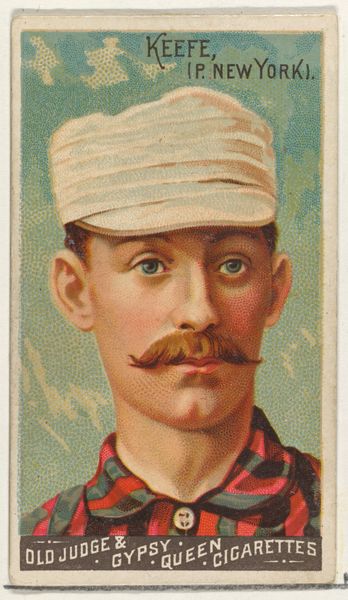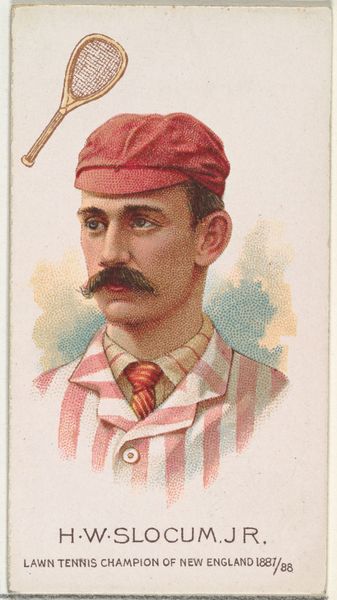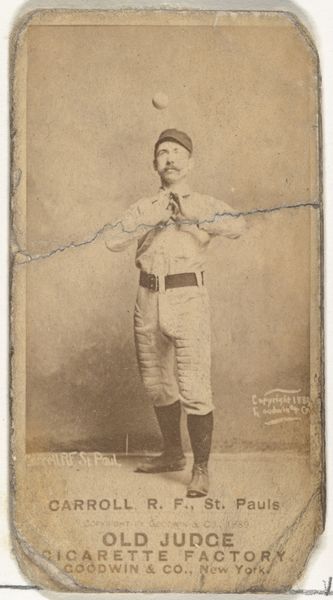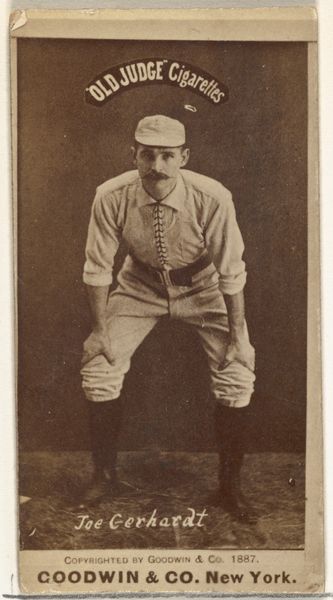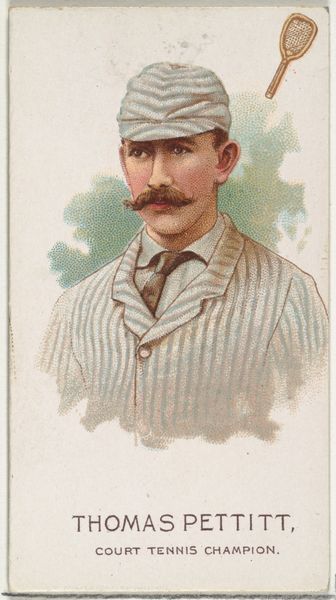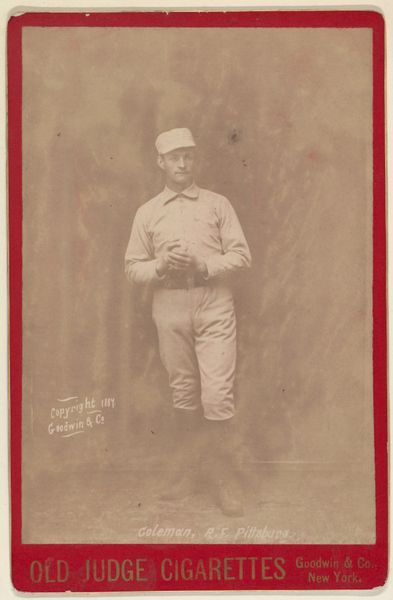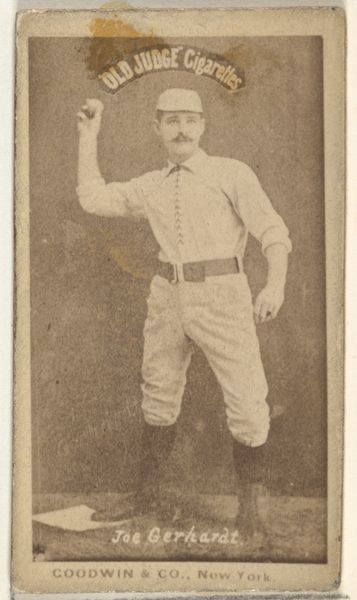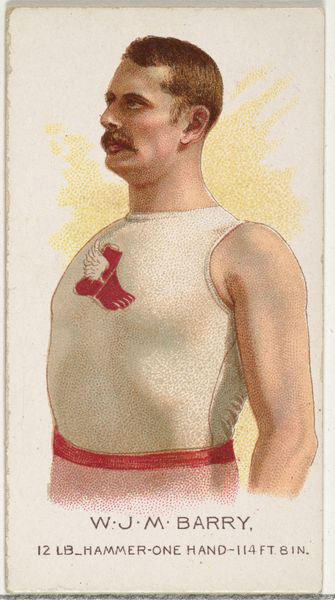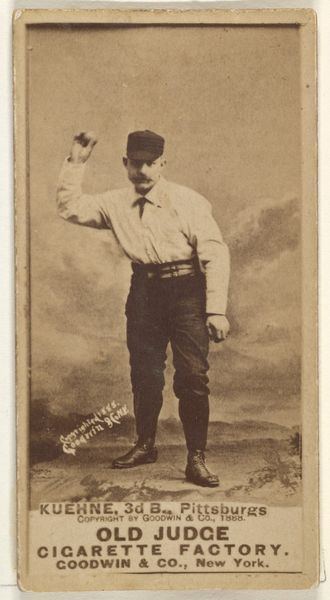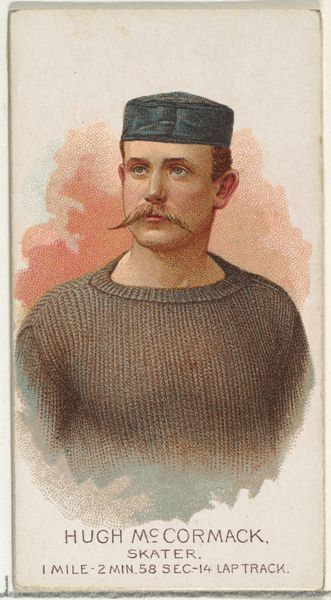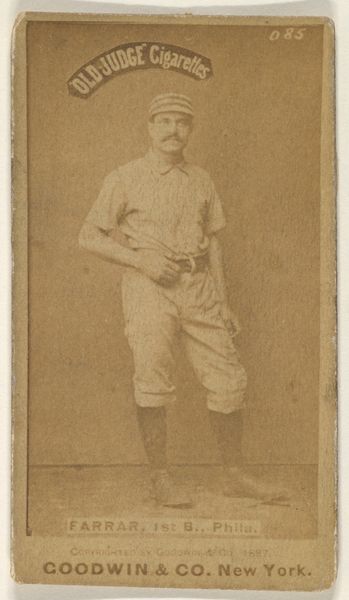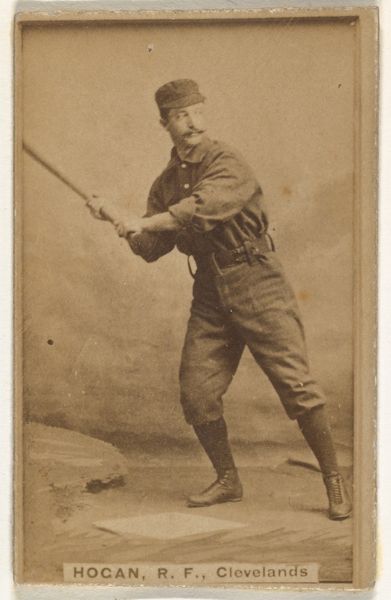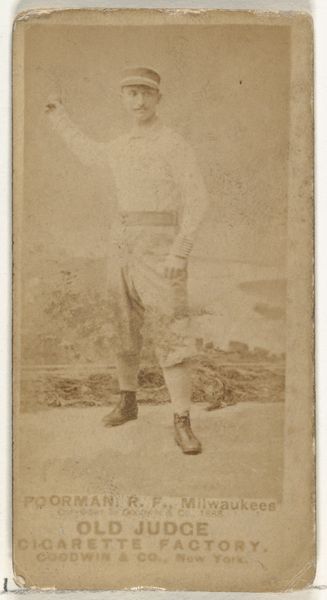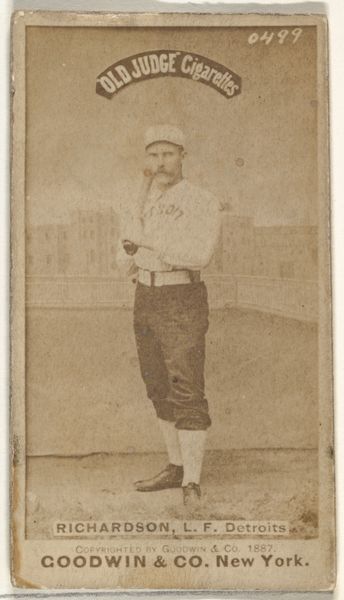
Timothy Keefe, Baseball Player, from World's Champions, Series 1 (N28) for Allen & Ginter Cigarettes 1887
0:00
0:00
drawing, print
#
portrait
#
drawing
# print
#
impressionism
#
caricature
#
figuration
#
men
#
genre-painting
#
athlete
Dimensions: Sheet: 2 3/4 x 1 1/2 in. (7 x 3.8 cm)
Copyright: Public Domain
Editor: So, here we have "Timothy Keefe, Baseball Player" from 1887, by Allen & Ginter Cigarettes. It's a small print, quite charming. What strikes me is its almost caricature-like quality, despite being quite a straightforward portrait. What do you see in this piece? Curator: I see a complex web of production and consumption masked as a simple baseball card. The material itself—the cardstock, the inks—speaks to a massive industrial effort aimed at embedding brands like Allen & Ginter into the popular consciousness. Editor: Cigarettes and baseball, quite a pairing. Curator: Precisely! Consider the social context: the rise of consumer culture, the burgeoning popularity of baseball, and the aggressive marketing tactics of tobacco companies. These cards weren't just innocent pictures; they were commodities, literally packaged with another commodity: cigarettes. Think about the labor involved in producing these cards, from the sourcing of materials to the printing process, to the very cultivation of tobacco and baseball as a new social pastime. Editor: So you're saying it's less about the image of Keefe, and more about the systems that created and distributed it? Curator: Exactly! And consider the accessibility of printmaking. A widely available artform such as print allowed Allen & Ginter to cheaply and effectively broadcast the new celebrity figure and consumption culture, bringing art outside traditional institutions into the everyday pocket of common folks. Each card represents a small part of a much larger capitalist machine. Editor: I never really thought about it that way, that something as simple as a baseball card could embody so much about labor and consumerism. Thanks for helping me connect these dots. Curator: My pleasure. Looking at art through the lens of materials and production helps us understand its place within a much wider economic and social framework, even baseball!
Comments
No comments
Be the first to comment and join the conversation on the ultimate creative platform.
